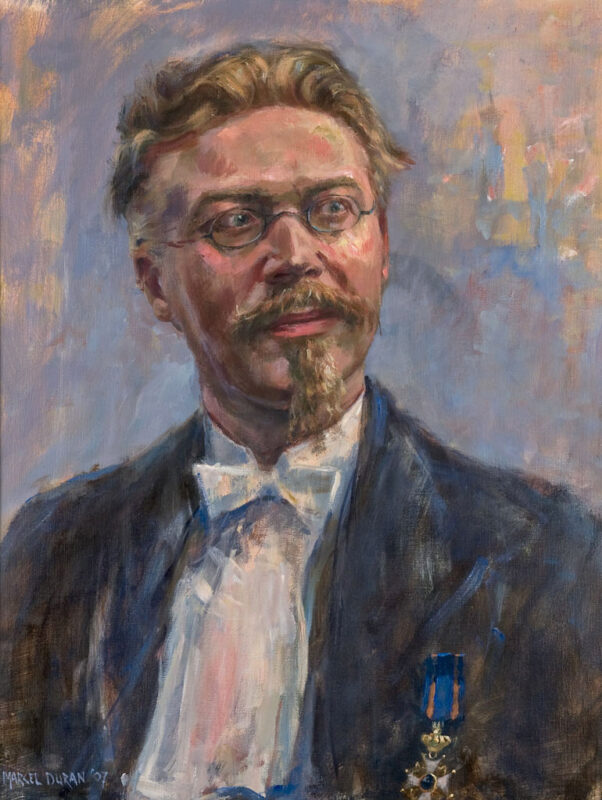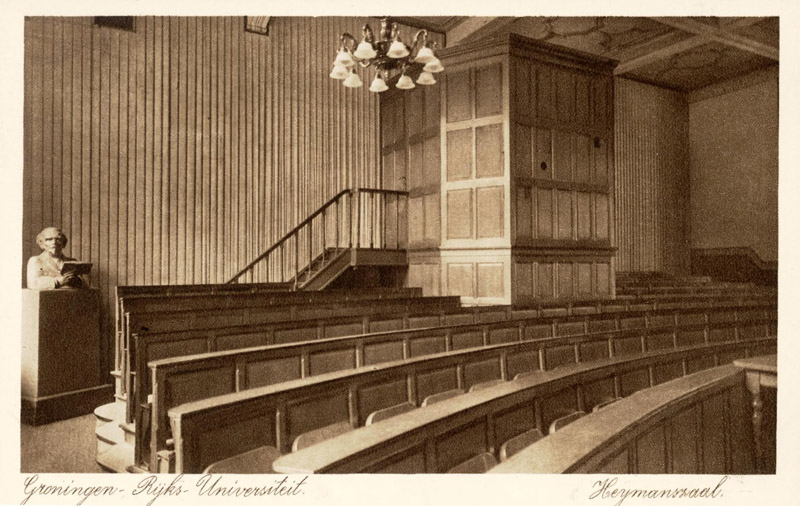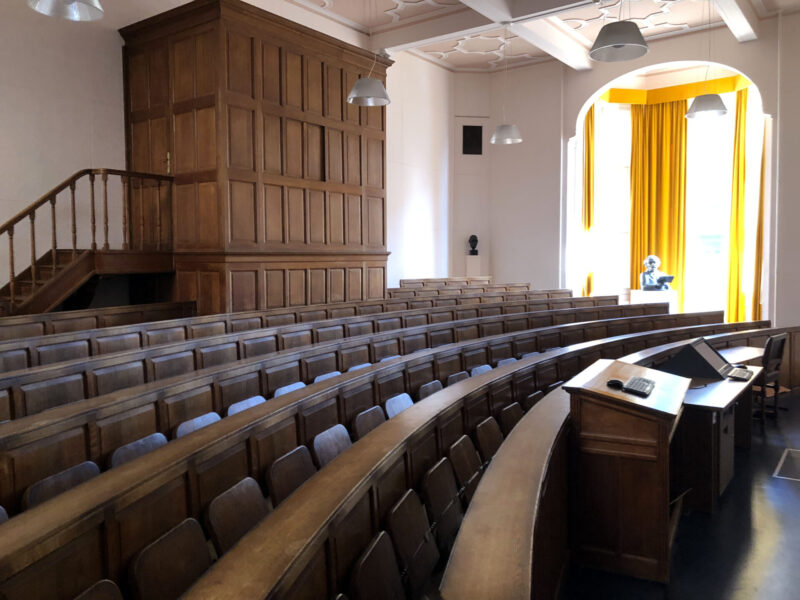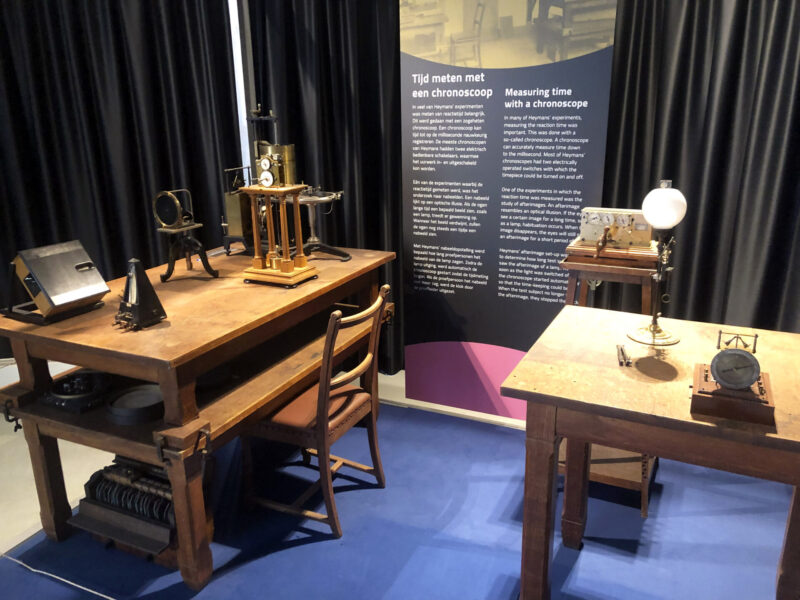waybackmachine
Heymans’ workspaceA world-class psychology lab is now a bathroom
Go right in front of the staircase at the Academy building and walk the length of the hallway until you reach a green painted door. Look up at the beautiful, gilded clock and read the inscription below: Heymanszaal.
It might just be the most beautiful lecture hall at the UG, and the only one that still looks exactly like it did in 1909, the year the current Academy building was finished after the old one had burned down.
But it’s not necessarily a very popular classroom. The old-fashioned wooden fold-out benches get pretty uncomfortable a half hour into class, and they creak every time someone dares to move. The concierges at the front door of the Academy building always know exactly when classes are finished, as the sound of dozens of benches snapping back to their position echoes through the foyer.
Knowledge of the soul
The room is named after Gerard Heymans (1857-1930), the founder of experimental psychology in the Netherlands, which back then was also known as ‘knowledge of the soul’. He was one of the most famous and influential professors at the UG and served as rector magnificus in the 1908-1909 academic year.

The room had been created specifically for Heymans in the new Academy building, although it wasn’t named after him until after his death. In this room, he taught his students the latest insights into the human psyche based on German psychology. But he did much more than just teach.
Heymans absolutely loved experimenting. He’d started years earlier in his house at the Stationsstraat, where he’d designed a special psychological laboratory. He had workers install a similar room in the new house at the Ubbo Emmiussingel, close to the current Groninger Museum and designed by architect Hendrik Peters Berlage that he and his wife Anthonia moved to. While the building still exists, it currently houses a real estate company. Due to a lack of test subjects, he performed thousands of experiments on his Anthonia at home.
Paranormal
Heymans was given the room in the Academy building’s right wing in 1909. The amphitheatre had room for 120 people. This was considered a lot back then, but Heymans’ classes were very popular.

He was also granted two workspaces to the left of the lecture room. These workspaces allowed him to design and build set-ups for his psychological research. He mainly focused on differential psychology, studying the way people differed from each other, but also on paranormal activities.
The rooms were special; because of the acoustic and optic experiments performed inside, they were completely silent. The walls especially were particularly thick at half a metre and made out of special material. Because of the extensive empirical research he did in these laboratories, Heymans became a nationally and internationally renowned scientist.

Dismantled
Heymans retired in 1927 and passed away three years later. Halfway through the fifties, in 1956 to be exact, the two labs were dismantled. A few of Heymans’ instruments (see photo below) have been preserved in the University Museum at the Oude Kijk in ’t Jatstraat.

What happened to the rooms after they’d been stripped of their functions? A switchboard was installed, where dozens of operators connected the world and the UG through wires and plugs; the UG’s basement is still home to the wide pipes that used to encase the phone cables.
After the switchboard was torn down, the room became a classroom with the unimaginative name of A12.
The other room that Heymans used to experiment in to his heart’s content? It’s now a bathroom, with the women’s toilets on the left and the men’s on the right. It’s probably for the best that professor Gerard Heymans isn’t around to see that.
Special thanks to Sieger Vreeling, curator of collections at the University Museum